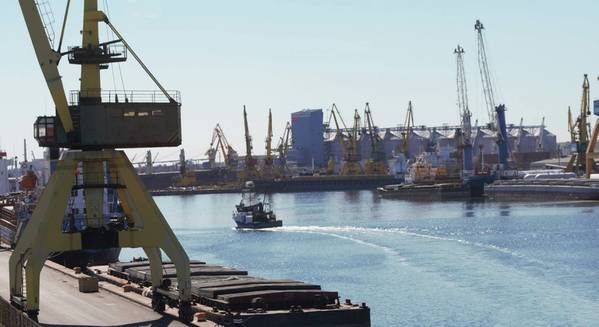
Romania's Constanta port, Ukraine's main alternative route for grain since Russia's withdrawal led to the collapse of the Black Sea shipment deal, has capacity to handle extra cargoes until mid-August, the head of the port's business association said.
He added operators were also seeking to increase capacity.
Even before Russia on Monday quit a safe passage grain corridor through Ukraine's own ports, Constanta had emerged as the biggest alternative shipping route. It has handled roughly a third of Ukraine's grain exports since the start of the war.
Transit pressure will mount on Constanta, which traditionally handles Romania's crop exports and those of its landlocked neighbours, including Hungary and Serbia.
Overall, it handled 15.25 million metric tonnes of grains in the first six months of this year, a 24.5% increase on the same time last year, the Constanta Port Authority told Reuters.
Ukrainian grains accounted for 7.5 million tonnes of the total. By comparison, Romanian port operators handled 8.6 million tonnes of Ukrainian grain in the whole of 2022.
Viorel Panait, the manager of port operator Comvex (CMVX.BX) and the president of the Constanta Port Business Association, told Reuters a lag in domestic grain harvesting and the reluctance of some Romanian farmers to sell their crops at low prices meant capacity would be available for Ukrainian grain until mid-August.
"Harvesting in Romania starts slightly later than in Ukraine, which generates a pause between the two crops," Panait said. "And some Romanian farmers are still holding onto their crops, so sales are stagnating at the moment."
"This creates an availability of logistic capacity that Ukraine could benefit from."
Panait also said operators of grain terminals have increased investment in equipment and management to boost operating capacity compared with the start of the war. At its peak so far, Constanta handled 25 million tonnes of grain per year, which Panait said will be exceeded in 2023.
"There is an accelerated course and everyone on it, the state, the port authority, port operators aim to boost operating and transit speeds, and the grain quantities," he said.
Panait said Comvex, which doubled its barge unloading capacity last year, is raising its grain storage capacity by 25% to 250,000 tonnes in an upgrade expected to take about eight months.
Freight logistics group TTS, which handles agricultural products, minerals and chemicals on the Danube river, completed the takeover of Constanta port solid bulk cargo operator Decirom S.A. earlier this month. TTS said it will invest 10 million euros ($11.12 million) to increase its operating speed by 2024.
Panait also said some port operators are using a digital system, which has reduced the time required to process customs statements to 30 minutes from up to 48 hours.
Ukraine has boosted capacity at its Danube ports of Reni and Izmail, and talks were being held with railcar operators on a new reloading system at the Ukrainian-Romanian border crossing of Vadul Siret-Dornesti, Panait said.
"We're talking real progress."
Ukraine and Russia are major global grain exporters, and Romania is one of the European Union's biggest growers.
It is one of five eastern EU countries that experienced an influx of Ukrainian grain as a result of Russia's invasion, leading the EU to approve temporary restrictions that meant grain could only transit through the countries.
($1 = 0.8991 euros)
(Reuters - Reporting by Luiza Ilie; Editing by Barbara Lewis)



